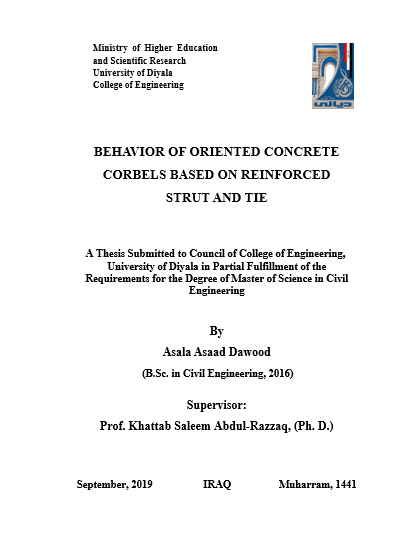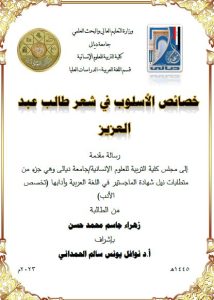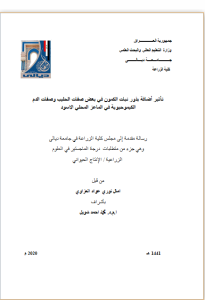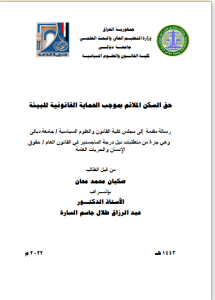ABSTRACT
The main objective of the current study is to investigate the behavior of reinforced concrete corbels when reinforcing their struts and ties as compressive and tensile members, respectively according to ACI 318M-14. Fifteen reinforced concrete corbel specimens were carried out experimentally with different shear span to effective depth ratios (a/d). The experimental program consisted of casting and testing six groups of corbel specimens with constant dimensions of 120 mm width, 400 mm height and 360 mm effective depth. The first three groups contained intermediate corbel specimens, while the other three ones contained end corbel specimens. The a/d value was 0.5 for the first and fourth groups, 1 for the second and fifth groups, while it was 1.5 for the third and sixth groups.
Each group of the intermediate corbel consisted of two specimens; conventionally reinforced reference corbel and proposed frame that took its geometry from the Strut and Tie Model (STM) stress paths, ACI 318-14. On the other hand, every end corbel group contained three specimens; the conventionally reinforced reference in addition to two proposed frames that one of them had covered tie and the second one had uncovered tie.
The experimental ultimate capacity, load-deflection response, first crack load, deflection at first crack, cracks characteristics such as type, width and propagation, strain values in steel bars and in concrete surface, the contribution of reinforcement to the strengths of struts and ties in addition to failure modes are also investigated.
The experimental results show that the load-deflection curves in proposed specimens exhibited more linearity than that of the reference specimens except near the failure load due to the fact that the applied load transferred more directly into the independent prismatic reinforced struts of the proposed specimens.
The proposed specimens did not exceed the conventional specimens in terms of experimental ultimate capacity, but in all cases, they exceeded the theoretical STM design load. More specifically, the specimens with a/d = 0.5, 1 and 1.5 show a decline in the experimental ultimate capacity compared with their reference specimens by about 2-16%, 0-18% and 23-30%, respectively, but in all cases, their theoretical design loads of STM, ACI 318-14 remained less than the experimental ultimate capacity by about 11-25%, 18-33% and 12-42%, respectively. Accordingly, it could be said that the proposed specimens are good alternatives for the reference corbels because of cost saving, weight reducing and providing a front side area for services which amounted to 13-52%, 1.7-15% and 14-52%, respectively in comparison with the reference specimens. That can be attributed to the fact that the stresses are actually transferred according to stress paths of STM, ACI 318-14.
The test results also indicated that when a/d increased by about 50-200%, the load capacity of the reference specimens decreased by about 17-36%, while the deflection, crack number and crack width increased by about 10-35%, 19-217% and 7-140%, respectively. In related context, the load capacity of the proposed specimens decreased by about 15-55%, when a/d increased by about 50-200%, while the deflection, crack number and crack width increased by about 13-49%, 0-122% and 10-420%, respectively. It is worth to mention that in some proposed specimens, due to different failure modes, crack width values decreased by about 7-29% when a/d increased by about 50-200%.
Measuring strain values experimentally enabled in estimating the reinforcement contribution to the concrete strength of the struts, 22%, 17%, and 26% when a/d was 0.5, 1 and 1.5, respectively. They were less than that estimated via ACI 318M-14 equations by about 8%, 32% when a/d was 0.5 and 1, while in case of a/d was 1.5, the contribution exceed ACI 318M-14 equations by about 4%.





